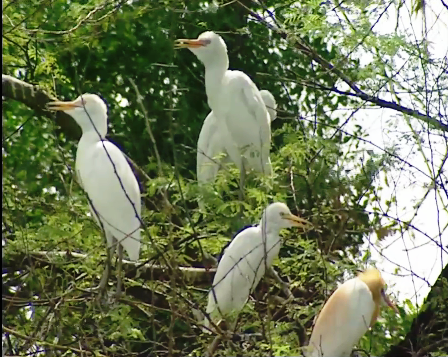Cattle Egret (Bubulcus ibis), Keoladeo or Bharatpur Bird Sanctuary in Bharatpur, Rajasthan
Cattle Egret (Bubulcus ibis) was first described by Carl Linnaeus in 1758 as Ardea ibis. Later it was moved to the current genus Bubulcus in 1855. Bubulcus is a latin connotation for ‘Herdsman’ and the genus is usually seen associated with cattle. This is also sometimes known as the ‘buff backed heron’ by the English. Normally the size of a hen, it has been one of the most successful bird species in terms of natural expansion and is found globally from Australia to the Americas. This massive success in its distribution is due to its close association with humans and their domestic animals. Many populations of Cattle egrets are highly migratory which has helped in this dispersion. Although occasionally feeding in shallow waters, it is generally found in fields and dry grassy habitats, following cattle and foraging on the insects dislodged due to cattle movements. Foraging efficiency is more in association with other animals than when single. It is more dependent for food on terrestrial insects rather than an aquatic food base. The cattle egrets nest in colonies often found in the vicinity of water. They feed on a variety of prey particularly grass hoppers, crickets, flies, moths, spiders, frogs and lizards etc. A cattle egret may also try to establish a feeding territory around a grazing animal. Dominant birds feed nearest to the host and obtain more food.
Both sexes are alike. The non breeding animal is white with a yellow bill and grayish yellow legs. During the breeding season, adults acquire an orange buff plumage, the bill, legs and iris become bright red for a short period, prior to pairing. The male is slightly larger and has longer breeding plumes. Large groups of individuals may aggregate together prior to the start of the breeding season. Male displays are followed by pairing. A new mate is chosen each season. Both individuals share domestic duties. The cattle egret also helps in the bio control of cattle parasites such as ticks and flies. These are picked directly from the skin of animals. The IUCN evaluates this as a species of least concern.
©Srimaa Communication
Acknowledgements-Dr. Yashpal Singh, Mrs. Neena Singh, Mr. Rajesh Bedi, Manoj Kumar Yadav
